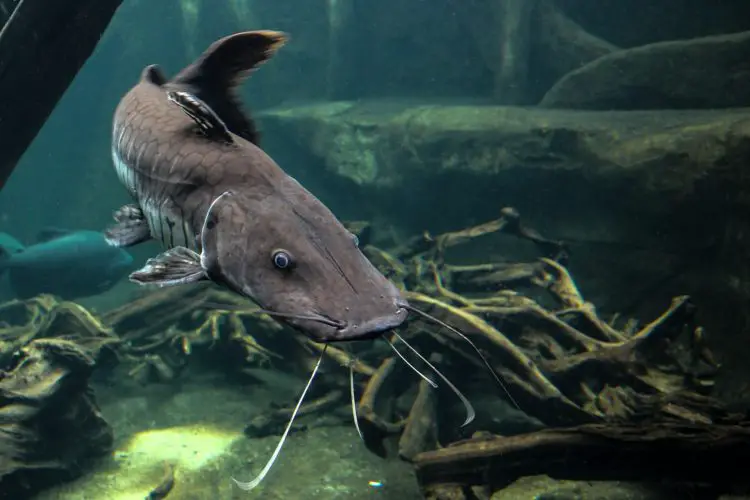Catfish are known for the presence of whiskers or barbels that help them survive the water. These barbels have sensors all over them, thus allowing them in the highly murky water to detect food and stay away from any danger. To learn more about the presence of whiskers in catfish and why the fish has them, keep reading this article. Catfish are fascinating yet complicated water creatures that have captured the attention of many fish-lovers.
What is the use of whiskers?
We already know that catfish have barbels, or, as many people like to call them, whiskers. Some other fish also have these barbels, and the fish use them to survive in the murky and dark conditions of the water. Therefore, there are other reasons why a catfish has whiskers besides its name.
Aids in search of food
Since we know the fish naturally lives in a dark habitat, the eyes of the fish are pretty useless. It is said that catfish is the most diverse fish, so it is found in water all over the world except for Antarctica. To adapt to these conditions, the fish has to have some special features, and having barbels is one of those special features. These whiskers are full of tiny taste buds and special olfactory sensors that help them detect food. The fish are usually omnivorous, so they rely on tiny fish as well as plant matter to survive. It is especially useful for finding prey when the fish looks for snails, small fish, and other crustaceans that can hide.
Useful in avoiding predators
In large bodies of water, catfish are a popular food source for other fish, such as other large catfish. Therefore, the fish needs a defense mechanism to fight these predators or hide before they can be detected. As we know, the barbels have special nerve endings that have taste buds as well as smelling buds, so the smell helps them detect the predator before their eyes can see. These barbels are present on the chin or the sides of the mouth before the fish, so they detect danger which will either prepare fish to fight or allow them enough time to hide.
For their protection
Other fish are not the only predators of catfish, as alligators and some birds are known to eat barbels as well. In fact, many fish are consumed by humans as well. Therefore, along with detecting danger, these barbels also help poke any predator that gets to them, thus protecting the fish. The barbels don’t cause harm to humans as they are not always poisonous, but they can sting, leading to mild discomfort. However, while catching catfish, some have poisonous barbs that can cause severe pain, retained foreign bodies, infection, respiratory compromise, arterial hypotension, and cardiac dysrhythmias. Some of these conditions can become serious. When you are removing them from a hook after you have caught them make sure to pay particular attention.
What are barbels?
We know the use of barbels, but exactly what is this fish organ? Along with catfish, the carp, the goatfish, the hagfish, the sturgeon, the zebrafish, and the black dragonfish are some species of fish with barbels. In fact, turtles have barbels as well, which are very similar to the catfish ones. The word barbel is from the Latin word “barbula,” which means “little beard,” which is what these barbels are. It is a long, cylindrical-shaped extension of the head of a fish made on an internal support system. Even some movement in these barbels allows the fish to scan the water properly. The barbels are a sensitive and necessary part of catfish. The barbels are littered with taste buds on every inch square so that no surface of water goes unchecked. The catfish starts to have barbels from the embryonic or juvenile stage and keeps growing with age. These barbels are an essential part of catfish’s life, as, without them, the fish would not survive for long.
Do all catfish have barbels?
Although barbels are a very important part of the fish’s life, not all of them have them. As you know, there are around 3,000 species of catfish, and they are found everywhere in the world. Some of them, of course, do live in clear water where there is simply no use for the barbels. The common catfish have barbels, but some catfish, with time, lost these whiskers because they did not need them anymore due to genetic mutation. Identifying a catfish without the barbels is much harder, but an expert can do it quickly.
How many whiskers does a catfish have?
The number of whiskers varies from species to species and in individual fish. Generally, there are four whiskers located on the upper jaw of the catfish and two whiskers located on the catfish’s chin. The whiskers’ location helps cover as much area as possible while the sensors on the barbels work their way through the water.
Are catfish barbels harmful?
To humans, the whiskers on catfish are actually harmless most of the time. The whiskers are like any other whiskers of a pet, such as dogs or cats. Therefore, touching them will not cause any discomfort or harm. However, the pectoral fins and dorsal fins are the real danger to humans. These fins are located at the back of the head of the fish, and the top of these fins is very hard, which can sing a human and even draw some blood. These spins even contain a small amount of poison that can cause swelling when puncturing the skin. Regardless, it would help if you did not worry about the barbels stinging you but rather the fins.
Conclusion
Catfish are an exciting breed of fish that are fun to look at and get to know. Hopefully, you learned something new and will be careful when handling a catfish with barbels which can lead to you to being a better-informed person and fisherman when going after catfish, if so inclined.













Pingback: How does a catfish breed? | Reel Fishing Guru
Pingback: How do Catfish use their Barbels? | Reel Fishing Guru
Pingback: How do Catfish Feed? | Reel Fishing Guru
Pingback: Blue Catfish: Information about them | Reel Fishing Guru
Pingback: Channel Catfish: Information about them | Reel Fishing Guru
Pingback: Differences Between Catfish and Dogfish | Reel Fishing Guru
Pingback: What is an Electric Catfish? | Reel Fishing Guru
Pingback: What Is the Difference Between Catfish and Flounder? | Reel Fishing Guru
Pingback: Do Catfish Have Good Eyesight? | Reel Fishing Guru